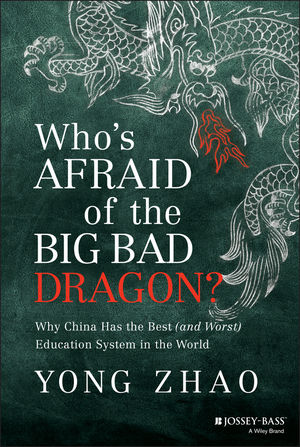Focused: Understanding, Negotiating, and Maximizing Your Influence as a School Leader
Focus, focus, and focus! Focus is what this book is about. Here we aim to help school leaders understand what they should focus on and why. We share examples, vignettes, and practical advice to illustrate how to focus without losing sight of the big picture. School leaders often are overwhelmed (Klusmann et al., 2023). They feel they need to be responsible for everything happening in the school, from curriculum to pedagogy, from teachers to students, from finance to extracurricular activities, from the physical environments to school culture, and from systematic requirements and regulations to community relations. As a result, school leaders are tempted to do everything, which of course is impossible. In this book, we focus on what school leaders should do and how they can prioritize the most important factors for the greatest impact.
When stakeholders better understand their roles and responsibilities within the school and are laser-focused on those roles, they understand how to hold themselves accountable for producing the agreed-upon outcomes. This is a key component of every school’s improvement plan, which we refer to in this book as “The Game Plan.” The plan should clarify the common vision and outline the responsibilities of each role. After reading this book, we hope that school leaders will be more empowered to only do the things that matter by creating a school culture where
- Leaders empower, coach, and support others within the local school ecosystem with time and resources to improve practice, strategy, and learning for all.
- Leaders spend the overwhelming portion of their time building leadership density across the school community so that agency and expertise are shared and student focused.
- All staff have clarity in their roles and are integral and important team members who can lead future-facing, school-based innovation within an evidence-based culture where everyone thrives.
- All staff collectively develop and commit to a team-based “game plan” that critically identifies manageable workloads and the way we all agree to do things in our high-performing school.
- Teachers and students feel empowered to work together to develop a culture of agency in which they have the time and space to exercise self-determination, pursue purpose, personalize learning, and effectively engage as a learning community.
- Student learning is focused on students’ foundations of learning, personal interests, strengths, and a mindset that will help them succeed throughout their lives.
- Leaders, teachers, and staff take collective ownership for reform and improvement in school outcomes.
- Students understand their roles and responsibilities as learners, are skilled in identifying and solving problems, participate in designing their own learning, and are involved in strategy meetings and school decision making.
We live in a world where the pace of change is rapid, disruptive, challenging, opportunistic, and leaving many people behind. Formal education has traditionally been about preparing the workers of tomorrow based on the certainty of yesterday (OECD, 2016). As diligent educators, we have previously followed the emerging trends and societal changes and cautiously adjusted, but now, as we deal globally with a multitude of existential challenges, schools, and the structure of education in general, we need to rapidly adapt to ensure learning is future-focused and centered on innovative solutions rather than consolidating practices from the past (Pelletier et al., 2023).
Although school leadership can be invigorating and rewarding, we know that it is also extremely difficult and incredibly challenging. Community and government have high expectations of school leaders and teachers are demanding, and evidence suggests that in many countries there are fewer educators prepared to take up these pivotal roles. The education profession is under duress and, arguably, being challenged like never before.
As the equity gap between students of high and low socioeconomic status continues to widen, more students are disengaging and losing their way (OECD, 2012, 2016). Therefore, it is essential that education from early childhood onward be reoriented and restructured to ensure that the change-makers, artisans, innovators, inventors, and civic leaders of tomorrow will protect and save our planet while ensuring global harmony, safety, opportunity, and equity for all.
This book provides school leaders with ideas to valiantly lead needed changes rather than continuing to respond to latent change. We desperately need global school leaders who harness the energy, drive, and commitment of their wider community to ensure that all students can invest themselves in real-world issues (UNESCO, 2021). Students need to be guided to learn anytime, anywhere—within the traditional school setting as well as outside the school fence. Each chapter opens with an illustrative vignette. We also share practical examples and additional stories to illustrate that with a focused approach, school leaders can ensure that students are empowered, confident, capable, and willing to solve the problems of their world. Each chapter offers substantive, research-based suggested action steps for becoming a more focused leader. At the end of each chapter, you will find focus points to support a focused approach to school leadership.
We don’t use the term focused loosely. We don’t mean structures are abandoned thoughtlessly and change is made for change’s sake. Rather, we define focused bravery as a state in which the school leader understands their influence and can negotiate and maximize positive change. We advocate for the development of intentional courage to do what is right based on evidence and together with a willing coalition that is clearing the way and addressing contextual problems of practice to provide equity and success for all.
For students to succeed, high-performing school leaders must only do the work that only leaders can do. This book is, therefore, about what that meaningful and influential work is and what you will need to change to become a brave and focused leader. We have met and worked with thousands of school leaders who are leading high-performing teams in which everyone has agency and the license to work as a tight-knit team to lead from the front. We have seen this work. We know that this is possible and have seen that innovation and constructive change are best driven at the local level.
…
EXISTENTIAL CHALLENGES
As we grapple with massive growth and development of technology, including artificial intelligence (AI), the changing nature of employment, potentially unstoppable climate change, and rampant social media creating “fake news” and contesting evidence and research, we move into a post-pandemic landscape, and in many parts of the world, attracting teachers to the profession has become more challenging as teachers face heavy workloads and salaries that do not reflect the complexity of the job. Educators are often opting for other careers that are better remunerated with greater workplace flexibility. It seems also that fewer teachers are seeking school leadership roles, which is particularly challenging for hard-to staff schools and isolated schools (Beng et al., 2020). The arrival of new forms of AI such as ChatGPT marks the mainstream advancement of the Age of Smart Machines. AI is transforming society and is already forcing educators to rethink what is worth teaching in the classroom and how teaching should be conducted globally. Moreover, students require a more contemporary curriculum with agency over what, how, when, and why they learn (Zhao, 2021).
School is no longer simply about preparing for a job or a profession.
Educators must rethink the purpose of education and how we deliver those outcomes by better engaging students and teachers (Hunter et al., 2022). A new social movement that focuses on social justice, personalization, fluid sexuality, and multicultural relationships has brought tensions to schools and society in general. A reorganization of globalization is being forged with the division of new groups of nations. Geopolitical tensions and outbreaks of war along with Western challenges to democracy as we know it are creating deep anxiety, with many young people on edge, feeling a sense of destabilization and hopelessness (OECD, 2020). Climate change is having a devasting impact across the world, and there is very little evidence that we are collectively and effectively addressing this threat (IPCC, 2022). Current geopolitical disputes, global economic challenges, and significantly higher cost of living mean that many families are under intense financial pressure, which brings social unrest and discontent, increased crime, and impoverishment for many. The decline in students’ social and emotional well-being globally is adding to teachers’ loads because well-being has become an additional component for teachers to prioritize and deal with.
WHAT IS THE JOB OF THE SCHOOL PRINCIPAL?
Faced with these massive constraints and barriers, schools and school leaders need to stop and evaluate to change how they operate. Schools are nested in a system composed of policymakers, system leaders, quality monitors, students, parents, teachers, and many external players. Many school leaders think they are too busy with the day-to-day challenges of operating schools to have the time to consider changes to the structures and traditions of the past. They also feel constrained by bureaucratic and regressive systems, policies, and parental concerns. To lead internal reform is necessary, but it also requires focus. In this book we advocate that school leaders must be focused on the high-value work within and across their community to reorient their school to prepare students for a life of uncertainty and opportunities in an age of smart machines. So, what should focused principals do? How do principals know what to focus on? These are some of the most challenging and contested questions regarding school leaders because there are many, and often too many, things school principals currently do but perhaps don’t need to do. Learning to prioritize and FOCUS on what matters is essential for effective school leadership.
What Is the Most Effective
During a period of lockdown in the early days of COVID-19, Jim was facilitating an online meeting of a task force of high-profile school leaders invited by their state education department in Australia to provide ongoing advice and expertise on the development of a more contemporary and relevant principal job description. They were tasked with identifying the most meaningful actions and role parameters that school leaders should prioritize to be most effective. This work had been initiated because local school leadership organizations believed that the work of the school leader was overwhelming and under resourced, and thus was not attractive to potential applicants. Principals felt that the state school system was too “top down,” which constrained innovation and did not consider the diversity and unique challenges that differentiated each school.
Toward the end of the months-long process, an eloquent and committed leader of a very large school was speaking online about how challenging it was that bureaucracies outside of the school did not understand the plight or community expectations of the school leader. Virtually mid-sentence and with a sharp rise in tone, he rapidly explained that he urgently had to leave the meeting. Everyone was naturally concerned that something very serious had required his immediate attention, but the meeting continued without him.
It was relayed the next day that the reason the leader left the meeting was that he had been told that a student had been injured in a sporting contest. The injury turned out to be a minor cut above his eye. Like others, this leader had directed his staff to always advise him immediately so that he could personally manage and be accountable for all emergencies and such issues. It is ironic that he left the meeting in the midst of explaining how his role was almost untenable because he had to be all things to all people.
This story illustrates why many school leaders find their jobs to be burdensome and overwhelming. When we have shared this story with other school leaders, the immediate response from a significant number of them has been, “Well, who else would be able to take control?” or “Of course, the school leader must be accountable for everything that happens!”
This book is designed to enable school leaders to provide their own answers to the questions “Who else will do this?” and “Who else could also be accountable?” or “How can I still be accountable without having to be everywhere?” Consequently, we focus on what we consider to be the two essential foundations of highly effective school leadership:
- How does the school leader identify, preserve, and navigate their leadership space when the reality is that they are being pulled in every direction during the school day?
- What is the job that only the school leader can and should be doing and what should you stop doing to ensure that you can focus on the things that matter most?
This book is not just a novel new take on school leadership. Rather, it is a book that demonstrates that effective leadership is dependent on place and context. It is a book that focuses on the interactions between the leader and the system. It is a realization that school leaders must explore, discover, and define their place in the system in order to create the space where they can effectively lead.
We chose to write this book because finding school leaders’ place in the system has, to our knowledge, not overtly been discussed and deconstructed because rarely have researchers or practitioners had the lived experience of school and system leadership and been challenged by the interaction of all actors at all levels of the education hierarchy. The demands on school leaders from all directions are often overpowering, and this book identifies how to negotiate a space for school leaders to influence, advocate, empower, and create conditions for success within an educational ecosystem that can be crowded and excessively hard to navigate. The space for effective school leadership is obtained through proactive interaction with the various players in the system and understanding the historical conditions of the school—and it is contingent upon the personal characteristics and awareness of the school leader. Finding the space where optimal leadership and influence take place is fundamental to the success of the leader and the school. This space is co-created by the school principal and other actors in and outside the school.
Negotiating and co-creating the space requires the school leader to have a clear understanding of the system; the players in the system; the context, history, and local conditions; and the collaboration of people in the local school community. Thus, when we encourage educators to take on a school leadership role, we must also challenge and support those appointees to look very hard to identify, understand, and carve out an optimal space and time where one can best influence and sustain positive changes.





























Feel free to comment:
The views expressed on this site are entirely my own. They do not represent my employer or any other organization/institution. All comments are subject to approval.